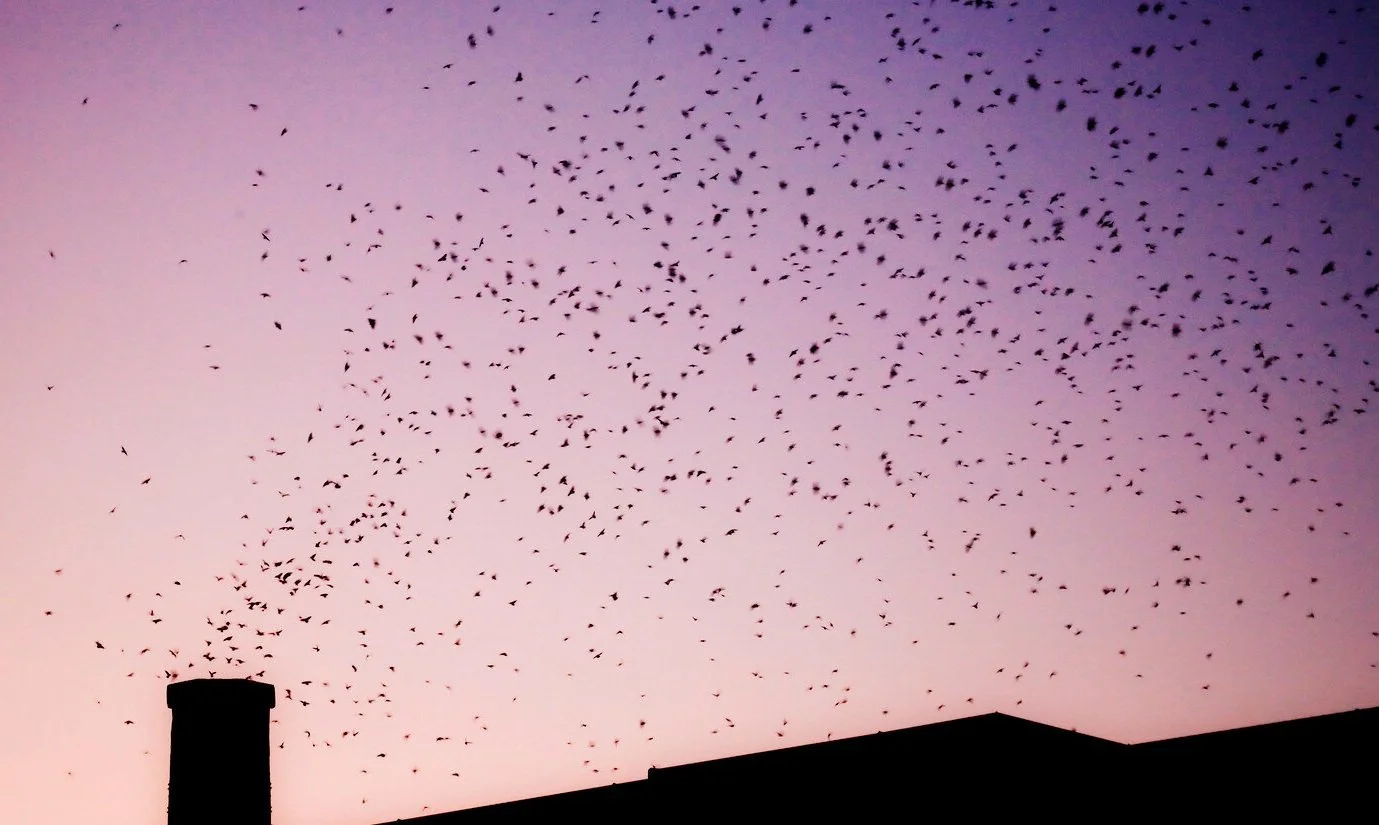Chimney Swift & Citizen Science
Note that Swift Night Out and Swift Week are finished for 2025
Chimney Swifts spend almost their entire lives flying! Photo by Andy Reago & Chrissy McClarren
Chimney Swifts spend 90% of their lives on the wing. For the remainder, they can be found clinging to the inside of their namesake chimneys. Like many bird species, swifts are declining—their population in Wisconsin has dropped dramatically: 72% over the last 50 years due to habitat loss, reduced insect prey, and climate change.
During the nesting season, one pair of Chimney Swifts will nest in one chimney. As fall migration begins, swifts gather in large flocks. Shortly after dusk, the flock begins to swirl above a chimney, eventually dropping in one by one to roost for the night. Sometimes over 1,000 swifts will roost in a single chimney! They do this night after night on their way to their overwintering sites in South America.
Find a roost chimney near year! Follow these eBird instructions created by the Wisconsin Chimney Swift Working group.
Swift Night Out and Swift Week Events
Swift Night Out citizen science events are held nationwide, with participants counting the number of swifts roosting in a chimney that night. In 2024, we hosted Swift Week along with our partner (listed at the top of the page), counting swifts at Cherokee Heights Middle School in Madison each night for a full week. The numbers were astounding! In 2025, Swift Week was held at Westminster Presbyterian Church, with Chimney Swift numbers hovering around 250 each night. The data are submitted to eBird to help track the population while providing information about key roost sites in our area.
Mighty Migrations webinar all about Chimney Swifts, given by Dr. Steffanie Munguía, August 2025
An interview with Brenna Marsicek, SoWBA’s director of outreach, all about Chimney Swifts and Swift Night Out events in September 2025
A Swift Night Out event in 2024, which had around 300 bird lovers come watch the show! Co-hosted by SoWBA, Feminist Bird Club, and BIPOC Birding Club. Photo by Caitlyn Schuchhardt.
Chimney Swift Conservation:
Chimney Swifts are in serious decline, so much so that they were upgraded to the “Orange Alert Tipping Point Species” list in the State of the Birds 2025 Report. This means they have lost more than 50% of their populations within the last 50 years, and accelerated declines within the last decade.
Swifts rely heavily on uncapped chimneys to nest and roost. In the past few decades, the number of uncapped chimneys has dropped greatly in Wisconsin and beyond. Chimneys can be an expensive component to repair or rebuild, so during remodels, they are often removed or permanently capped.
A special chimney in Madison is the one at Cherokee Heights Middle School, but it’s at risk and we need your help! Learn more here.
Here are some things YOU can do to help Chimney Swifts.
Avoid capping chimneys, or remove the cap between late April and October when swifts are nesting or migrating.
Keep your chimney clean for nesting season! If your chimney is not capped or lined, make sure you get your chimney swept each April, and close the damper during nesting season. A clean chimney prevents nests from slipping and falling off the chimney wall.
Look for a chimney in your community that is used by swifts for nesting or roosting. If you find one, enjoy watching it and make sure that it is protected—call who owns it, share information about swifts, and advocate for preservation.
If there is a Swift Night Out held in your community, attend and bring as many friends, neighbors, and kids with you as possible. The more people who know and care about swifts, the better.
If there isn’t a Swift Night Out in your community, consider starting one. Learn from others who have done similar events.
Resources:
Purchase your own Swift Night Out shirt, with proceeds benefitting Chimney Swift conservation in southern Wisconsin!
More Chimney Swift articles by SoWBA:
Banner photo: Chimney Swifts coming into roost at the Cherokee Heights Middle School chimney in Madison. Photo by Brenna Marsicek/SoWBA











What draws most people’s attention to Chimney Swifts in the fall is their incredible roosting behavior. Chimney Swifts spend 90% of their lives flying—only pausing their lives on-the-wing to roost and to nest. They eat, sleep, and mate while flying. In migration, flocks of Chimney Swifts roost in—you guessed it—chimneys, clinging with their feet to the walls while they sleep.
Photo by Andy Reago & Chrissy McClarren FCC